Harnessing Expert IT Solutions for Business Growth and Success
Most businesses waste thousands on IT solutions that don’t fit their needs. You know your IT infrastructure could support more—but it’s tangled and underused. This post shows how smart digital strategies can drive real business transformation without the guesswork.
Understanding Modern IT Solutions

The Current State of Business Technology
In today’s competitive marketplace, companies of all sizes rely on technology to maintain operations and drive growth. Yet many organizations find themselves with a patchwork of IT systems that were acquired over time without a cohesive plan. This fragmented approach often results in redundant systems, security vulnerabilities, and missed opportunities for automation and data analysis.
Common IT Challenges Facing Businesses Today
Most companies encounter similar obstacles when managing their technology resources. These include:
-
Rising costs for maintenance and support
-
Difficulty scaling systems as the business grows
-
Security concerns and compliance requirements
-
Legacy systems that don’t communicate with newer applications
-
Limited internal IT expertise for strategic planning
Strategic IT Infrastructure Planning
Assessing Your Current Technology Environment
Before making changes to your IT infrastructure, conducting a thorough assessment is essential. This process involves:
-
Documenting all hardware, software, and network components
-
Identifying critical systems and their interdependencies
-
Evaluating performance metrics and bottlenecks
-
Reviewing security protocols and vulnerabilities
-
Understanding how technology supports business processes
Building a Technology Roadmap
A well-designed technology roadmap serves as a guide for future investments and improvements. This strategic document should:
-
Align with your overall business objectives
-
Prioritize projects based on value and urgency
-
Account for budgetary constraints
-
Include timelines for implementation
-
Consider both short-term needs and long-term goals
Digital Strategies That Drive Growth

Cloud Computing and Its Business Benefits
Cloud services have fundamentally changed how businesses approach IT management. The advantages include:
-
Reduced capital expenditures on hardware
-
Improved accessibility for remote workers
-
Simplified scaling as business needs change
-
Built-in disaster recovery capabilities
-
Access to enterprise-grade security features
Data Analytics for Informed Decision Making
Companies that leverage their data gain significant competitive advantages:
-
Customer insights that drive product development
-
Operational metrics that highlight inefficiencies
-
Financial analytics that improve profitability
-
Predictive models that anticipate market changes
-
Performance indicators that measure business health
Cybersecurity as a Business Imperative

The Rising Threat Landscape
As businesses become more digitally connected, security risks continue to increase. Recent trends show:
-
More sophisticated phishing and social engineering attacks
-
Ransomware targeting businesses of all sizes
-
Supply chain vulnerabilities affecting entire industries
-
Insider threats from current and former employees
-
Regulatory penalties for data breaches and non-compliance
Creating a Comprehensive Security Framework
Protecting your business requires a multi-layered approach:
-
Regular security assessments and vulnerability testing
-
Employee training and awareness programs
-
Access control and authentication protocols
-
Data encryption and backup strategies
-
Incident response planning and testing
IT Solutions for Specific Business Challenges
Supporting Remote and Hybrid Workforces
The shift toward flexible work arrangements requires specific technology considerations:
-
Secure remote access to company resources
-
Collaboration tools that maintain productivity
-
Equipment management for distributed teams
-
Performance monitoring and management
-
Cultural adaptations supported by technology
Streamlining Operations Through Automation
Process automation offers substantial returns on investment:
-
Identifying repetitive tasks suitable for automation
-
Selecting appropriate tools and platforms
-
Implementing changes with minimal disruption
-
Measuring results and refining processes
-
Expanding automation to additional areas
Partnering with IT Experts
When to Consider External IT Support
Most businesses benefit from external expertise in certain situations:
-
During major technology transitions or upgrades
-
When specialized knowledge is required
-
For objective assessments of current systems
-
To supplement internal IT staff during projects
-
When creating long-term technology strategies
Selecting the Right IT Partner
Finding a suitable technology partner involves evaluating:
-
Technical expertise and certifications
-
Experience with similar businesses and industries
-
Communication style and responsiveness
-
Support options and service level agreements
-
References and case studies demonstrating success
Measuring the Impact of IT Investments
Key Performance Indicators for Technology
Tracking the right metrics helps justify technology investments:
-
Return on investment for specific projects
-
System uptime and reliability statistics
-
User satisfaction and adoption rates
-
Security incident frequency and resolution times
-
Productivity improvements and cost savings
Continuous Improvement in IT Management
Technology management should follow a cycle of:
-
Planning based on business objectives
-
Implementing changes methodically
-
Monitoring performance and user feedback
-
Adjusting approaches based on results
-
Planning the next round of improvements
Preparing for Future Technology Trends
Emerging Technologies Worth Watching
Forward-thinking businesses stay informed about:
-
Artificial intelligence and machine learning applications
-
Internet of Things (IoT) for business insights
-
Edge computing for faster processing
-
Blockchain for secure transactions
-
Virtual and augmented reality for training and customer experience
Building an Adaptable Technology Foundation
Creating flexibility in your IT infrastructure involves:
-
Adopting open standards where possible
-
Choosing scalable solutions that grow with your business
-
Maintaining documentation and knowledge management
-
Fostering a culture of learning and adaptation
-
Reserving resources for experimentation and innovation
Practical Steps for Business Transformation
Starting Your Digital Transformation Journey
Begin with manageable changes that build momentum:
-
Conduct an honest assessment of current capabilities
-
Identify “quick wins” that demonstrate value
-
Build internal support through education and involvement
-
Document successes and lessons learned
-
Use early results to inform larger initiatives
Overcoming Common Implementation Obstacles
Successful technology adoption requires addressing:
-
Resistance to change among staff
-
Budget constraints and competing priorities
-
Integration challenges with existing systems
-
Skill gaps that limit effective use
-
Maintaining momentum after initial enthusiasm
